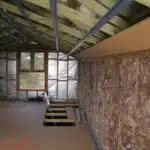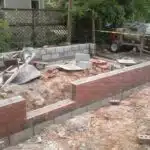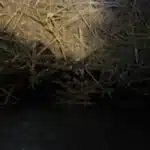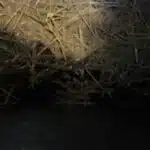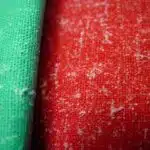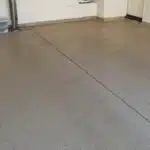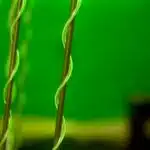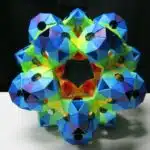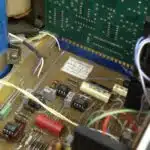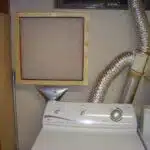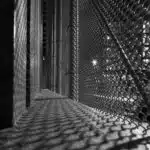Insulating a shed is an essential step in keeping it functional throughout the year. Not only does insulation help regulate the temperature inside the shed, but it also protects the contents from moisture and mold growth. Proper insulation can also save homeowners money on energy bills by reducing heating and cooling costs.
When it comes to insulating a shed, there are several options available depending on budget, climate, and personal preferences. It’s crucial to choose the right insulation material and installation method to ensure maximum efficiency and longevity. In this article, we will discuss the different types of insulation available for sheds, their advantages and disadvantages, as well as provide tips on how to install them correctly. By following our advice, readers will be able to create a comfortable and protected space that meets their specific needs.
The Importance Of Shed Insulation
Insulating your shed is a crucial step in maintaining its durability and functionality. The benefits of insulating your shed are numerous, including improved temperature regulation, reduced energy costs, and protection against moisture damage. Shed insulation is also cost-effective, as it helps to prevent the need for repairs and replacements that could be costly in the long run.
Insulation provides a layer of thermal protection that can keep your shed warm during winter and cool during summer. Without proper insulation, you may find that your shed is too cold or too hot to use comfortably. This can make it difficult to store items or use the space for other purposes. Insulation helps to maintain a consistent temperature inside the shed, making it more comfortable and usable year-round.
In addition to improving temperature regulation, insulation protects against moisture damage caused by condensation. Moisture can cause wood rot and mold growth, which can weaken the structure of your shed over time. Insulation helps to prevent condensation from forming on surfaces inside the shed, reducing the risk of moisture damage. In summary, insulating your shed has many benefits and is cost-effective in terms of preventing future repairs. Understanding your climate and shed needs will help you select the best insulation materials for your specific situation.
Understanding Your Climate And Shed Needs
Understanding your climate and shed needs is an essential step in insulating your shed. This will help you determine the appropriate insulation type and thickness to use. You should consider the temperature range, humidity levels, and precipitation patterns in your area to make informed decisions.
Shed ventilation is also a critical factor to consider when insulating your shed. Proper ventilation helps regulate temperature and moisture levels in your shed, preventing mold growth and rotting of wood materials. Ensure that you have enough air vents on the roof and walls of your shed before starting the insulation process.
Insulation costs can vary depending on the size of your shed, type of insulation material used, and labor involved. However, it’s important to invest in high-quality insulation that meets your needs for optimal energy efficiency. A well-insulated shed can save you money on heating costs during winter months while providing a comfortable working environment all year round.
When choosing the right insulation material for your shed, there are several factors to consider, including R-value, durability, fire resistance, and moisture resistance. It’s important to select an insulation material that not only meets these criteria but is also compatible with other components of your shed’s construction. In the next section, we’ll discuss some popular types of insulation materials available for sheds and their respective advantages and disadvantages.
Choosing The Right Insulation Material
When it comes to insulating a shed, choosing the right insulation material is crucial. There are various types of insulation materials available in the market today, each with its own set of pros and cons. It’s essential to know the advantages and disadvantages of each type before making a decision.
One popular insulation material is spray foam insulation. This type of insulation provides excellent air-sealing capabilities, making it an ideal choice for sheds located in areas with extreme weather conditions. However, spray foam insulation can be quite expensive compared to other options. Another downside is that it requires professional installation and handling due to its chemical composition.
Another option worth considering is rigid foam board insulation. This type of insulation offers high R-values, which means it can provide superior thermal resistance compared to other materials. It’s also relatively easy to install on your own, saving you installation costs. However, rigid foam board insulation can be quite pricey compared to other options, making it less appealing for those on a tight budget.
Cost comparison is an important factor when deciding on the right insulation material for your shed. Fiberglass batt insulation is one of the most affordable options available. It’s easy to install and doesn’t require any special equipment or professional installation services. On the downside, fiberglass batts are not as efficient in sealing air leaks and providing adequate thermal resistance as other materials like spray foam or rigid foam board insulation. In the next section, we will discuss fiberglass insulation in detail and explore its advantages and disadvantages further.
Fiberglass Insulation
1.Fiberglass insulation is an effective way to insulate a shed due to its ability to reduce air leakage, maintain consistent temperatures, and provide soundproofing. 2.Fiberglass insulation can help to reduce energy costs, increase comfort, and improve indoor air quality in the shed. 3.Proper installation of fiberglass insulation is key to achieving the desired energy savings and comfort levels. 4.A professional installer should be consulted to ensure that the fiberglass insulation is properly installed to achieve the best performance.
Fiberglass Benefits
When it comes to insulating a shed, fiberglass insulation is an excellent option to consider. It offers many benefits that can make a significant difference in the comfort and efficiency of any space. One of the primary benefits of fiberglass insulation is its ability to effectively trap air, which helps prevent heat loss during colder months and keeps indoor spaces cooler during hotter months. This quality makes fiberglass insulation an ideal choice for those who want to save on energy bills while keeping their sheds well-insulated.
Another advantage of using fiberglass insulation is its ability to effectively reduce noise levels. As a result, installing it in your shed can help create a quieter and more peaceful environment, making it easier for you to concentrate on your work or hobbies. Additionally, fiberglass insulation is relatively easy to install, making it an affordable and convenient option for those who want to tackle this project themselves.
When installing fiberglass insulation in your shed, there are some tips you should keep in mind to ensure optimal results. Firstly, be sure to wear protective gear such as gloves and a dust mask when handling the material as the tiny fibers can irritate your skin and lungs. Secondly, make sure that you measure the space correctly before purchasing the insulation as this will ensure that you have enough material to cover all areas effectively. Finally, be sure to follow manufacturer instructions carefully during installation to ensure proper placement and optimal performance.
Overall, if you’re looking for an efficient and cost-effective way of insulating your shed while enjoying several benefits such as reduced energy costs and noise reduction, then fiberglass insulation is definitely worth considering. Its ease of installation also makes it an excellent choice for those who want to tackle this project themselves without needing professional assistance.
Fiberglass Installation
When it comes to insulating your shed, fiberglass insulation is a popular choice due to its effectiveness in trapping air and reducing noise levels. However, there are also other fiberglass insulation alternatives that you can consider for your shed. These include spray foam insulation and cellulose insulation, which offer their own set of pros and cons.
Spray foam insulation is an excellent alternative to fiberglass insulation as it provides better coverage and sealing properties. It creates an airtight barrier that prevents air leaks and moisture build-up, making it ideal for sheds located in areas with extreme weather conditions. On the downside, spray foam insulation can be more expensive than fiberglass insulation and requires professional installation.
Cellulose insulation is another option worth considering for your shed as it is made from recycled materials such as newspapers and cardboard. This makes it an eco-friendly option that is also effective in reducing noise levels. However, like spray foam insulation, cellulose insulation may require professional installation and can be more expensive than fiberglass insulation.
In conclusion, while fiberglass insulation remains a popular choice for insulating sheds due to its affordability and ease of installation, there are also other options available such as spray foam insulation and cellulose insulation that offer their own unique benefits. As such, it’s important to weigh the pros and cons of each product carefully before deciding which one best suits your specific needs.
Cellulose Insulation
Cellulose insulation is another popular option for insulating a shed. It is made from recycled materials such as newspapers, and it is an eco-friendly choice that can benefit both the environment and your wallet. In terms of cost effectiveness, cellulose insulation is known to be one of the most affordable options on the market.
The benefits of choosing cellulose insulation are numerous. Firstly, it has excellent thermal performance which means that your shed will stay warm during cold winter months and cool during hot summer months. Secondly, it has great soundproofing capabilities making it ideal for those who use their sheds as workspaces or music studios. Lastly, its eco-friendliness can help you reduce your carbon footprint.
When considering cellulose insulation for your shed, there are some important things to keep in mind. The installation process should always be done by a professional to ensure maximum efficiency and safety. Additionally, while this type of insulation may be more cost effective than other options initially, it may require more maintenance down the line. However, if you’re looking for an affordable and environmentally conscious option with great thermal and soundproofing performance, then cellulose insulation may be the perfect choice for your shed.
Moving onto the next section about spray foam insulation…
Spray Foam Insulation
Spray Foam Insulation is a popular method of insulating sheds due to its numerous benefits. It is a type of insulation that uses polyurethane foam to fill gaps and cracks in walls, ceilings, and floors. This method of insulation provides superior thermal resistance compared to traditional materials like fiberglass batts. Spray foam insulation also acts as an effective air barrier, sealing all the air leaks in your shed. This reduces the amount of energy needed to heat or cool your shed, which translates into lower energy bills.
One of the major benefits of spray foam insulation is that it can be applied by DIY enthusiasts. The process involves using a special spray gun to apply the foam directly onto surfaces. However, it is important to follow the manufacturer’s instructions carefully, wear protective gear, and work in well-ventilated areas when applying spray foam insulation. If you are not confident in your abilities or do not have experience working with spray foam insulation, it is recommended that you hire a professional contractor.
When considering spray foam insulation for your shed, it is important to keep in mind that this method can be more expensive than traditional types of insulation. However, this cost can be offset over time due to the energy savings you will experience from having an insulated shed. Additionally, spray foam insulation has a longer lifespan than other types of insulation materials such as fiberglass batts or blown-in cellulose.
To further improve the thermal performance of your shed, reflective insulation can be used in conjunction with spray foam insulation. Reflective insulation works by reflecting radiant heat back towards its source rather than absorbing it like traditional forms of insulation do. This makes reflective insulation ideal for use in hot climates where reducing heat gain is essential for comfort and energy efficiency. In the next section, we will explore how reflective insulation works and why it might be a good option for your shed.
Reflective Insulation
Spray foam insulation is a popular method of insulating sheds, but it may not be the best fit for everyone. Another option to consider is reflective insulation, which uses a radiant barrier to reflect heat away from the shed. This type of insulation can be particularly effective in areas with high temperatures and intense sunlight.
The installation process for reflective insulation involves stapling or taping the sheets onto the interior walls and ceiling of the shed. It is important to ensure that there are no gaps or spaces between the sheets, as this can reduce their effectiveness. Additionally, it is recommended to install a vapor barrier before adding the reflective insulation to prevent moisture buildup.
Overall, reflective insulation can be a great choice for those looking for an effective and affordable way to insulate their shed. By reflecting heat away from the interior space, it can help keep temperatures down and reduce energy costs. In the next section, we will explore another option for shed insulation: rigid foam board insulation.
Rigid Foam Board Insulation
Rigid foam board insulation is one of the most popular methods for insulating a shed. This material comes in various thicknesses and sizes, making it easy to install in different areas of your shed. Rigid foam board insulation is ideal for use in walls, floors, and ceilings.
Cutting foam board insulation to fit the specific dimensions of your shed is a crucial step in the installation process. Use a straight edge or a T-square to ensure that your cuts are precise and even. It’s also important to seal any gaps between the insulation panels using spray foam or caulk. This will prevent air from leaking through and keep your shed well-insulated.
Insulating your shed with rigid foam board has several benefits. Here are three reasons why you should consider this type of insulation:
- It provides excellent thermal protection.
- It helps reduce noise infiltration.
- It can improve the overall energy efficiency of your shed.
Now that you’ve learned about how to properly insulate your shed with rigid foam board, it’s time to compare other types of insulation to see which one will work best for your needs.
Comparing Insulation Types
When it comes to insulating a shed, understanding the various insulation types is essential in order to make the best choice. R-value is a measure of insulation’s ability to resist heat flow, with higher values indicating greater insulating power. Foam board, cellulose insulation, reflective foil, radiant barrier, fiberglass batts, loose-fill insulation, spray foam, and rock wool are all types of insulation available for purchase. Air sealing and vapor barrier are important components of a comprehensive insulation system. Additionally, cost, installation, durability, and performance should all be taken into consideration when deciding which type of insulation to invest in.
R-Value
Understanding R value is crucial when it comes to insulating a shed. R value is a measurement of insulation’s ability to resist heat flow. The higher the R value, the better the insulation performs. When comparing insulation types, it’s essential to consider their R values, as this will determine how effective they are at keeping your shed warm in winter and cool in summer.
Insulation thickness also plays a critical role in determining its R value. Generally, thicker insulation has a higher R value than thinner insulation. However, it’s important to note that not all insulation materials have the same density, so two different materials with the same thickness may have different R values. It’s best to consult with an expert to determine which type of insulation and thickness is best for your shed.
When considering which insulation type to use for your shed, keep in mind that cost shouldn’t be the only factor you consider. While some types of insulation may be more expensive upfront, they may provide you with greater savings on heating and cooling costs in the long run due to their high R values. Ultimately, choosing an insulation type with a high R value and appropriate thickness will help ensure that your shed stays comfortable year-round.
Foam Board
When it comes to comparing insulation types for your shed, one option to consider is foam board insulation. Foam board, also known as rigid foam insulation, is made from a variety of materials such as polystyrene, polyurethane, or polyisocyanurate. It’s ideal for insulating walls and roofs in sheds because it has a high R value per inch of thickness.
One of the benefits of using foam board insulation is its exceptional thermal resistance. It provides an air barrier that helps prevent heat loss and infiltration of cold air into the shed. Additionally, foam board insulation is durable and resistant to moisture damage, making it an excellent choice for areas that are prone to dampness or humidity. However, one drawback of foam board insulation is its cost compared to other types of insulation. It can be more expensive upfront but may provide long-term savings on energy costs due to its high R value.
Another benefit of foam board insulation is its ease of installation. It can be cut with a utility knife or saw and adhered directly onto the wall or roof surface with construction adhesive or mechanical fasteners. Unlike other types of insulation that require specialized equipment and expertise for proper installation, foam board can be installed by homeowners with basic DIY skills. However, it’s essential to ensure that the joints between panels are sealed tightly with tape or sealant to prevent any gaps where air can escape.
In conclusion, when considering which type of insulation to use in your shed, foam board can be an excellent option due to its high R value per inch, exceptional thermal resistance, moisture resistance, and ease of installation. While it may be more expensive upfront than other types of insulation, it may provide long-term savings on energy costs. As always, consult with an expert before making any decisions about insulating your shed to ensure you choose the best option for your specific needs.
Cellulose Insulation
Moving on to another insulation type that you can consider for your shed, let’s talk about cellulose insulation. This type of insulation is made from recycled paper products that have been treated with fire-retardant chemicals. It’s an eco-friendly option that provides excellent thermal performance and soundproofing.
One of the advantages of cellulose insulation is its affordability compared to other types of insulation. It’s a cost-effective option that can save you money on energy bills in the long run. Additionally, it’s easy to install since it can be blown into wall or ceiling cavities without the need for special equipment or skills. Cellulose insulation is also effective in reducing noise transmission, making it ideal for sheds used as workshops or music studios.
However, there are also some disadvantages to using cellulose insulation. One of these is its susceptibility to moisture damage if not installed correctly. Cellulose insulation should be kept dry and away from areas where water can penetrate, or else it could lead to mold and rotting issues. Moreover, since cellulose is a loose-fill material, it may settle and lose its R-value over time, requiring additional insulation installation in the future.
Overall, while cellulose insulation has its advantages and disadvantages like any other type of insulation, it remains a viable option for insulating your shed. Its affordability, ease of installation, and soundproofing capabilities make it worth considering for your specific needs. Nevertheless, always consult with a professional before deciding on any type of insulation to ensure your shed remains insulated effectively and efficiently.
Preparing Your Shed For Insulation
Are you tired of the cold seeping into your shed during winter? Perhaps you’ve considered insulating it, but are unsure where to begin. Preparing your shed for insulation is an essential step in ensuring that the job is done correctly and efficiently.
Assessment is the first step in preparing your shed for insulation. Assessing the condition of your shed’s walls and ceiling will help determine whether or not they need repair or replacement before installation. It’s also important to check for any leaks or gaps that may compromise insulation effectiveness. Proper assessment will ensure a seamless installation process and long-lasting results.
Materials selection is another critical aspect of preparing your shed for insulation. Choosing the right insulation material can make all the difference in keeping your shed warm during colder months and cool during warmer seasons. The most common options include fiberglass, spray foam, and rigid foam board insulation. Each material has its advantages and disadvantages, so it’s essential to do thorough research before making a final decision.
Now that we’ve covered the importance of assessment and materials selection let’s move on to installation tips for fiberglass insulation.
Installation Tips For Fiberglass Insulation
After preparing your shed for insulation, it’s time to decide whether you want to take on the task of installation yourself or hire a professional. Cost comparison is an important factor to consider, as DIY insulation can save money but may not be as effective as a professional installation. It’s also important to note that fiberglass insulation can be dangerous if not handled properly.
If you choose to install fiberglass insulation yourself, there are several safety precautions that must be taken. Always wear protective gear, including gloves, goggles, and a mask. Make sure the area is well-ventilated and keep children and pets away from the work area. It’s also important to avoid compressing the insulation during installation, as this will reduce its effectiveness.
In addition to safety precautions, there are several tips for installing fiberglass insulation effectively. These include cutting the insulation carefully to fit snugly into each cavity and ensuring that all gaps are filled completely. It’s also important to install a vapor barrier over the insulation to prevent moisture buildup. With proper installation techniques and safety precautions in place, fiberglass insulation can effectively insulate your shed at a lower cost than hiring a professional installer.
Moving forward with cellulose insulation? Here are some installation tips to ensure success…
Installation Tips For Cellulose Insulation
When it comes to insulating a shed, cellulose insulation is a popular choice for many homeowners due to its affordability and effectiveness. However, before installing cellulose insulation, it’s important to understand the different installation methods available: blowing and spraying. Both methods have their pros and cons, but ultimately the decision will depend on your specific needs and budget.
Blowing cellulose insulation involves using a machine to blow the loose-fill fibers into wall cavities or attic spaces. This method is typically faster and less expensive than spraying, but may not provide as thorough coverage. Spraying cellulose insulation involves mixing the loose-fill fibers with water and spraying them onto surfaces using special equipment. This method allows for better coverage in hard-to-reach areas but can be more expensive.
When comparing the cost of different installation methods for cellulose insulation, it’s important to consider both the upfront cost of materials and equipment as well as long-term energy savings. While blowing may be a cheaper option initially, it may not provide as much energy efficiency in the long run compared to spray insulation. Additionally, hiring a professional installer can also affect costs as they may charge differently depending on the installation method used.
Overall, choosing between blowing or spraying cellulose insulation will depend on your specific needs and budget. It’s important to weigh the pros and cons of each method carefully before making a decision. In the next section, we will discuss some helpful tips for installing spray foam insulation in your shed.
Installation Tips For Spray Foam Insulation
A homeowner named Sarah wants to insulate her shed, and she has already read about the benefits of cellulose insulation. However, she is also considering spray foam insulation as an alternative option. Spray foam insulation offers several benefits that make it a popular choice among homeowners. It provides an airtight seal that prevents air leaks and drafts, resulting in better energy efficiency.
If Sarah decides to go with spray foam insulation for her shed, she would have two options: DIY installation or hiring a professional installer. While DIY installation seems like a cost-effective solution, it is not recommended for beginners due to the complexity of the process. Professional installers have experience in handling spray foam insulation and can ensure proper installation without any mistakes or safety hazards.
Overall, choosing between DIY vs professional installation for spray foam insulation depends on one’s skill level and budget constraints. While DIY may be tempting for cost savings, it is crucial to consider the potential risks involved. Hiring a professional installer may require a larger upfront investment, but it guarantees a safe and effective installation process that will last for years to come.
Moving forward with insulating her shed, Sarah should carefully weigh the pros and cons of each option before making a final decision. If she chooses to go with spray foam insulation, hiring a professional installer would provide peace of mind knowing that her shed will be properly insulated without any safety risks or mistakes during the installation process.
Installation Tips For Reflective Insulation
Reflective insulation is a popular choice for insulating sheds due to its numerous advantages. This type of insulation is made from a reflective material that reflects heat away, making it an ideal option for those who live in warmer climates. Reflective insulation also helps to prevent condensation, which can cause damage to your shed over time.
When it comes to DIY reflective insulation installation, there are a few tips that can help you get the job done quickly and efficiently. First, make sure that you have all of the necessary tools and materials before you begin. This will save you time and ensure that the project runs smoothly. Additionally, be sure to follow the manufacturer’s instructions carefully to ensure that your installation is done correctly.
One important thing to keep in mind when installing reflective insulation is that it should always be installed with an air gap between the insulation and the roof or wall of your shed. This air gap helps to increase the effectiveness of the insulation by allowing air to flow freely around it. To create an air gap, install wooden battens or furring strips onto your shed walls or roof before installing the reflective insulation.
Properly installing reflective insulation in your shed can provide long-lasting benefits for both your wallet and the environment. With its ability to reflect heat away and prevent condensation buildup, this type of insulation can help keep your shed cool during hot months while also protecting against moisture damage. Keep reading for tips on how to maintain and upkeep your newly insulated shed!
Maintenance And Upkeep Of Shed Insulation
Imagine a house without a roof. It would be susceptible to all kinds of weather conditions, making it uncomfortable and impossible to live in. Similarly, insulation is the roof over your shed, protecting it from temperature fluctuations, moisture damage, and pests. However, simply installing insulation isn’t enough; you need to take care of its maintenance and upkeep.
Maintenance tips for shed insulation are crucial to ensure that your shed remains protected for years to come. One essential task is checking for any gaps or cracks in the insulation material regularly. These gaps can allow air leakage and compromise the effectiveness of the insulation. Additionally, you should inspect the surrounding area for any signs of moisture or water damage that may have seeped through the walls or ceiling.
Common problems with shed insulation include mold growth due to moisture accumulation and pest infestation. Regular cleaning and inspection can prevent these issues from occurring. If you do find mold growth on your insulation material, it’s best to remove it immediately as it can cause respiratory problems if left untreated. Pests such as rodents can also damage your insulation by chewing through it, leading to air leakage and reduced effectiveness.
In summary, maintaining your shed insulation is crucial in ensuring that your shed remains protected from various external factors such as weather conditions, pests, and moisture damage. Regular cleaning and inspection are necessary to prevent common problems such as mold growth and pest infestations. By following these maintenance tips, you can extend the lifespan of your shed’s insulation while keeping it in good condition for years to come.
Conclusion
Shed insulation is an essential step towards maintaining an optimal temperature inside your shed, regardless of the climate outside. The choice of insulation material plays a significant role in ensuring that your shed remains well-insulated throughout the year. Fiberglass insulation is one of the most commonly used materials due to its affordability and ease of installation. However, cellulose insulation and spray foam insulation are better options for those seeking more effective and eco-friendly alternatives.
When it comes to installation, it is crucial to follow proper techniques for each type of insulation. In addition, regular maintenance and upkeep are necessary to ensure that your shed remains well-insulated over time. By understanding your climate and shed needs, choosing the right material, and following proper installation tips, you can create a comfortable environment within your shed all year round.
In conclusion, insulating your shed is a practical investment that provides numerous benefits in the long run. Whether you choose fiberglass, cellulose or spray foam insulation, it is important to consider their respective pros and cons before deciding on the best option for your specific requirements. Although shedding may seem like a minor part of your property at first glance, its impact on overall energy efficiency should not be underestimated. With proper maintenance and upkeep, you can keep your shed insulated efficiently for years to come.
Image Credits
- “Richmond Sheds” by @Doug88888 (featured)





